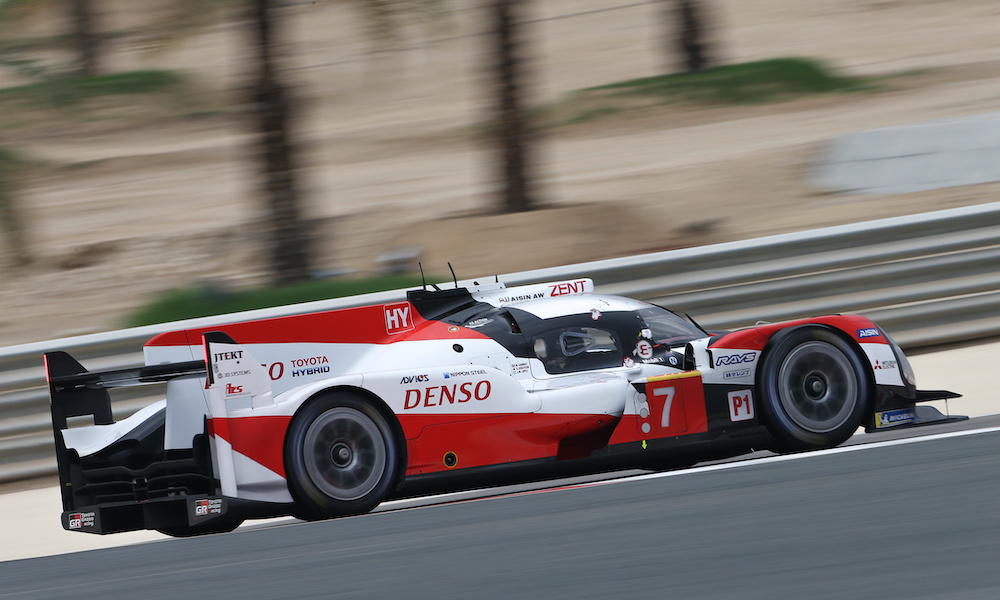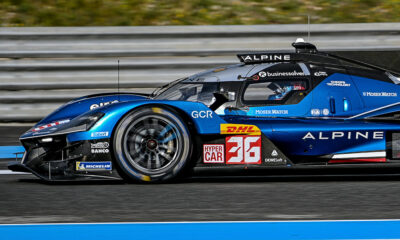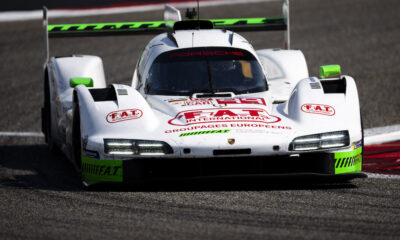
Photo: Toyota
Toyota’s two cars will be made around two seconds slower than the Rebellion R13 Gibson for the next FIA World Endurance Championship round at Circuit of The Americas.
The latest LMP1 success handicap bulletin published on Wednesday confirms that the points-leading No. 7 Toyota TS050 Hybrid of Mike Conway, Kamui Kobayashi and Jose Maria Lopez will be slowed by 2.77s per lap of the 5.51 km circuit, in relation to the ‘virtual car’ reference.
By comparison, Toyota’s No. 8 car driven by Sebastien Buemi, Kazuki Nakajima and Brendon Hartley will be slowed by 2.21s.
The No. 1 Rebellion of Norman Nato, Gustavo Menezes and Bruno Senna will receive the smallest handicap of 0.55s and will be 35kg lighter than it was last time out in Bahrain.
The fact that Toyota overturned its handicap disadvantage in the 8 Hours of Bahrain by taking a 1-2 finish means that Rebellion gets an even larger break for COTA.
Despite heading to Bahrain with a 1.36s handicap compared to the Toyotas’ 2.72s and 2.51s handicaps, a troubled race resulted in Rebellion finishing three laps down in third.
This extended the gap between the two Toyotas and the Rebellion in the championship, resulting in the latter gaining a more favorable handicap for the series’ visit to Texas.
The six-hour Lone Star Le Mans race will feature just three LMP1 competitors after Team LNT withdrew both of its Ginettas last week.
‘Virtual Car’ Rule in Effect for LMP1 Leaders
Rather than being handicapped in relation to the last-placed car in the standings, which had been the case up until Bahrain, the top three LMP1 cars are now being slowed in relation to a ‘virtual car’ which sits 40 points behind the championship leader.
The ‘virtual car’ rule is used when the gap between any car and the last-placed car, in this instance the No. 6 Ginetta G60-LT-P1 AER, exceeds 40 points.
To calculate the success handicap for COTA, the ‘virtual car’ was created by subtracting 40 from the total amount of points held by the championship-leading No. 7 Toyota.
This put the ‘virtual car’ on 56 points. The difference between this amount and the points totals of the Toyotas and the Rebellion was then used to create the handicap for each car.
To achieve each handicap amount, the above points differences were multiplied by the length of the COTA track in kilometers and the WEC’s co-efficient of 0.01255.
The cars were then slowed by various means – the non-hybrid Rebellion by weight and the hybrid Toyotas by power – to achieve the desired seconds-per-lap handicap figure.
Toyota Gazoo Racing technical director Pascal Vasselon has explained why the ‘virtual car’ rule is needed to ensure the adequate handicapping of LMP1 entries.
“If you do it the other way around, referring to the [car] which is at the bottom of the championship, very quickly you will have the top two or three cars fighting together and they will be saturated with the same handicap,” he said.
“You don’t want to saturate the success handicap at the top of the championship because these are the guys you want to keep together.
“This is why you want to keep the top car minus 40. It’s a bit complex but it’s what is needed to achieve what you want to achieve.”
John Dagys contributed to this report.























